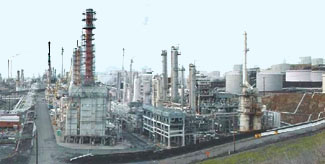Salmonella enterica
Articles that lack this notice, including many Eduzendium ones, welcome your collaboration! |
Classification
Higher order taxa
Bacteria; Proteobacteria; Gammaproteobacteria; Enterobacteriales; Enterobacteriaceae
Species
Salmonella enterica
Description and significance
The Salmonella bacteria were first discovered by an American scientist, Dr. Daniel E. Salmon in 1884. Dr. Salmon isolated the bacteria from the intestines of a pig and called it Salmonella choleraesui. The genus Salmonella is divided into two species, S. enterica and S. bongori. Salmonella enterica are rod shaped gram-negative bacteria. They are very commonly found in raw meat, chicken, and egg shells. Another one of its' habitats is in contaminated water.Once it enters the host, it resides in the intestinal tract of the human or animal. Research done on the genomic sequencing of S. enterica can aid in the effectiveness of medications and vaccinations in treating disease. It is usually isolated on a selective medium such as Maconkey agar, XLD agar, XLT agar, or DCA agar. The three main serovars of Salmonella enterica are Typhi, Typhimurium, and Enteritidis. Their DNA are anywhere between 95% and 99% similar. Ways that researchers have used to differentiate between the different serovars is by looking at their phage specifity. S. typhi is the serovar responsible for typhoid fever, a lethal disease. This disease is usually found in poor, under developed areas. The most common symtoms are fever, vomiting and possible death. S. typhi is found in contaminated water. A human can become infected by drinking the contaminated water or even by washing other foods with the water. S. typhimurium used to be the most common cause of food poisining. It has many of the similar symptoms as S. typhi although not usually fatal. Humans with a weak immune system may require antiobiotics as treatment. S. enteritidishas recently become the most common cause of food poisoning and gives rise to the same symtoms as S. typhimurium. Additionally, it infects and spreads through flocks of chickens. This causes the Salmonella infection to affect the human intestines once the chicken has been ingested.
Genome structure
The genome of S. typhi CT18 is made up on a large circular shaped chromosome and two plasmid referred to as pHCM1 and pHCM2. The chromosome is 4.8Mb and the plasmids are 218 kb and 106 kb, respectively. These plasmids have different drug resistant bands. S. typhimurium has one chromosome that is also 4.8Mb in length, but only one plasmid, pSLT, that is smaller than the plasmids of S. typhi. S. typhi TY2 contains one chromosome that is 4.7Mb long, but lacks plasmids with drug resistant bands. This strain was used to develope the vaccine for infections caused by S. typhi. Psuedogenes are molecules similar to genes, except that they lost their ability to code for proteins. Since they cannot no longer code for or express proteins, they are considered nonfuntional genes. S. typhi CT18 contains 204 pseudogene. Nine of these pseudogenes are genes found in S. typhi TY2. TY2 and CT18 have 195 pseudogenes in common and TY2 has 11 different ones.
Cell structure and metabolism
S. enterica is a motile, rod shaped bacteria that contain peritrichous flagella. Importany molecules that they produce once inside their hosts, are specific proteins that causes the cells of the intestinal walls that it is invading to become disorganized. The disorganization of the cells caused by the production of these proteins causes the bacteria to become engulfed. The proteins that are produced by the bacteria staple together the hosts' actin molecules so that it will fold around the bacteria. This protein is referred to as Salmonella invasion protein A (SipA). New research done at the University of Georgia has found that Salmonella use hydrogen as an energy source. It was originally thought that hydrogen was eliminated from the body as a waste product. New reaserch has discovred that hydrogen is not a waste product, rather it remains in the body and can used as evergy by invading bacteria. When researchers sequenced the genome of Salmonella bacteria they found that they contained three membrane associated enzymes that helped break down hygrogen.
Ecology
Describe any interactions with other organisms (included eukaryotes), contributions to the environment, effect on environment, etc.
Pathology
Different species of Salmonella can cause a wide range of diseases from gastrointestinal problems to typhoid fever. Usually the strain can be carried in a large range hosts including humans, animals, rodents, and birds. S. typhi, a serovar of S. enterica, will only infect humans. The typhoid fever that it causes kills 500,000 people per year. Other serovars like S. typhimurium infect humans, as well as many other mammalian species. The bacteria enters the host by disturbing the membrane. Once inside, it harms the host by causing the levels of intracellular free calcium to increase and disorganizing the cytoplasm of the cell. Symptoms usually include diarrhea, fever, and abdominal cramps. Strains that are associated with food-borne infections are usually not treated with antibiotics, but will resolve themselves over time. The typhoidal strains usually do require treatment by antibiotics, and possibly hospitilization. Some of the antibiotics have been used in the beef and poultry industries. This has caused for a strain of bacteria to be resistant to the antibiotics.
Application to Biotechnology
Does this organism produce any useful compounds or enzymes? What are they and how are they used?
Current Research
Enter summaries of the most recent research here--at least three required
